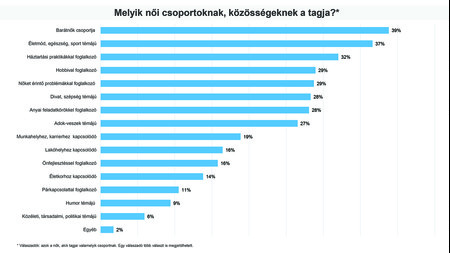How did it all begin?
Important online female communities are rooted in history. „Starting from the middle of the 19th century, women had protested and fought for the same goals at different times and in different parts of the world. Now these rights are universal rights”, said Andrea Pető, Historian, Doctor of the Hungarian Academy of Sciences, Professor of the Central European University, Research Fellow of CEU Democracy Institute. International Women’s Day was first celebrated in 1910 when Clara Zetkin, Politician and Women’s Rights Activist suggested the idea at the Socialist Second International in Copenhagen which was supported by over 100 women delegated from 17 countries of the world.
In Hungary, Women’s Day was first celebrated in 1913. In the past more than hundred years, every country developed its own traditions and customs, but Women’s Day has become the symbol of supportive female communities worldwide.
Cohesive communities
Solidarity between women and the resulting communities, be them tea clubs or online groups, are important components of women’s movements. According to Andrea Pető, women’s solidarity had many different forms in history including women’s clubs, formal or informal programs mentoring women, women’s schools and movements to fight together for reproductive rights. These groups have always been glued together by solidarity with each other and human dignity.
The historian stresses that you shouldn’t focus on once-a-year celebrations on the occasion of Women’s Day, as women’s solidarity and the century-long fight for equality are the reasons why women can now overcome the disadvantage caused by sex differences. “On International Women’s Day, it shouldn’t be women who speak up, protest and fight for equal rights, but everyone who wants to build a liveable society ensuring dignity for all”, said Andrea Pető.
Help during the pandemic
Female communities have an especially important role now during the pandemic, as indicated by Telenor’s recent Women’s Day research [1]. In the online survey conducted on a sample of 840 women, more than 50% of respondents were members of an online or real-life group targeting especially women. Most of them are active in these groups to ask for advice and get help (60%), gain inspiration (42%) or get in touch with other women in a similar life situation (40%). 39% of respondents appreciate fast and easy access to information about their topics of interest – if they have a question, they only need to grab their mobile phone and ask the members of their community.
Two out of three respondents are members of 2 to 5 women’s groups while 1 in 4 attend more than six such groups. The most popular female communities include friends’ groups (39%) and health/lifestyle/sports groups (37%), but clubs focusing on household tips, hobbies, female issues, fashion and beauty, motherhood and sales also have a high membership. Most respondents say they are active in a group liking and commenting on posts.
What types of female groups or communities are you member of?
Most female communities use social media (e.g. a Facebook group) to keep in touch. Exceptions include friends, workplace and neighbourhood groups that tend to use both personal and online communication. These communities were also affected by the pandemic. One in five respondents said that they fully moved to the online space. The importance of these communities has remained unchanged. 13% of the sample gained valuable assistance from their groups in facing recent challenges, while 16% joined new women’s groups during the pandemic.
[1] Research conducted by Ipsos Instant Research on a sample of 840 women aged 18 to 65 between 24 February and 1 March 2021.

